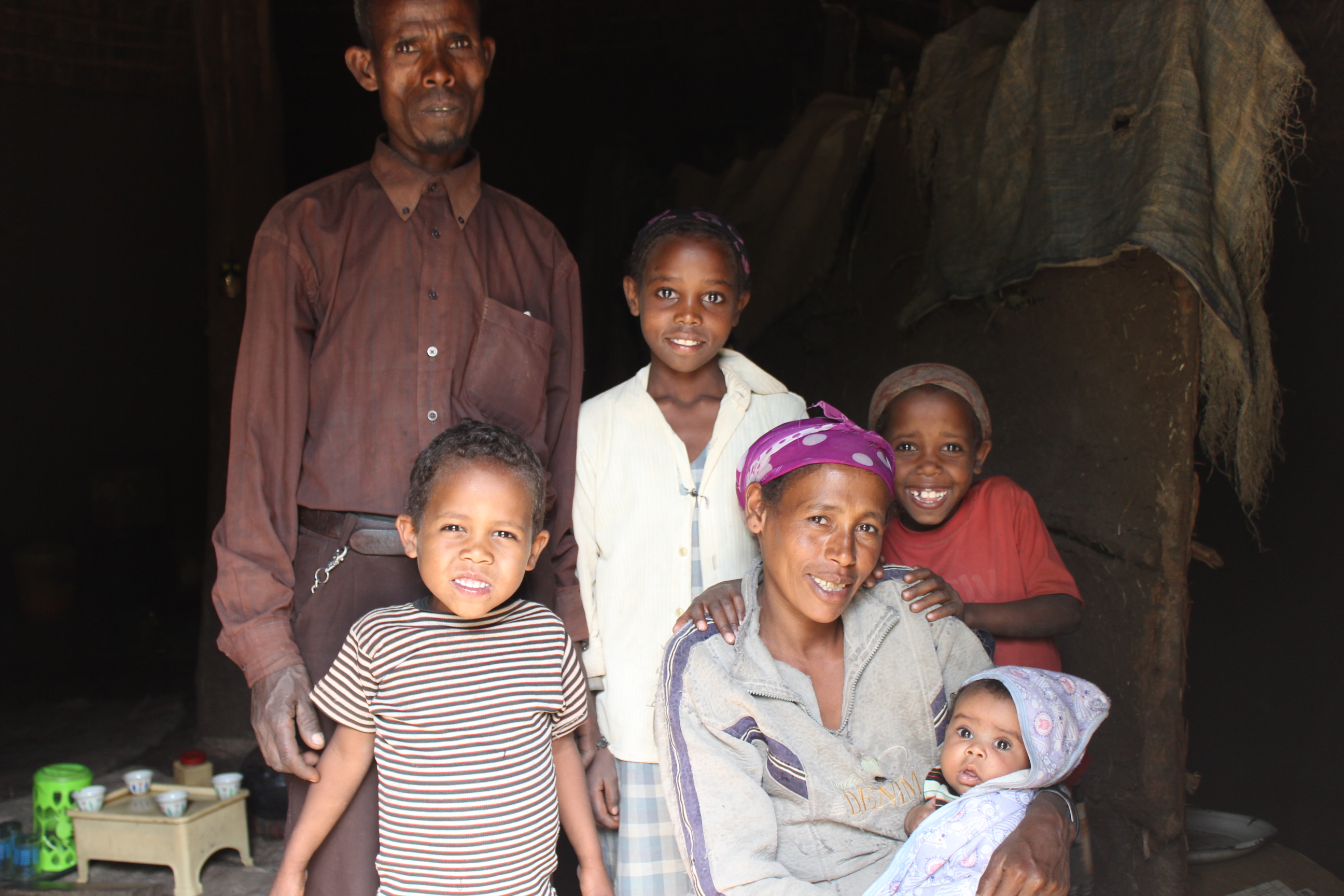Features
In this section, you'll find stories of successful L10K Project implementation in the four regions of Ethiopia and the resulting benefits. These features are based on observations from the field, interviews with households, health development army members, and health extension workers (HEWs) that were affected by the application of one or more of L10K's community-based strategies.
L10K Supports Ethiopia's COVID-19 Pandemic Response
With funds from the Bill & Melinda Gates Foundation, the Last 10 Kilometers project (L10K) is supporting the Ministry of Health (MOH) and Addis Ababa Regional Health Bureau (AARHB) to respond to the COVID-19 pandemic in Ethiopia through the Urban Health Extension Professionals COVID-19 Readiness while Maintaining MNH Care (Addis Ababa Pilot). L10K's support will strengthen the capacity of AARHB to respond to the COVID-19 pandemic and work to minimize the impact on maternal and newborn (MNH) service uptake during the COVID-19 response.
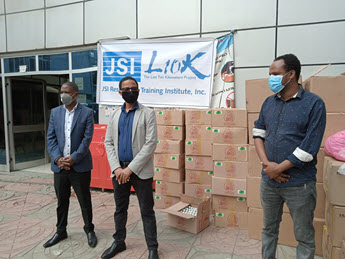
L10K, in collaboration with other partners, is working with the AARHB to implement a house-to-house COVID-19 syndromic screening strategy through the Risk Communication and Community Engagement (RCCE) teams led by the urban health extension workers health center and security staff. The RCCE teams screen households for symptoms, identify and link suspected cases to a Rapid Response Team for isolation and testing, and promote COVID-19 prevention behaviors to families and individuals. L10K collaborated with other JSI projects, Digital Health Activity and Data Use Partnership, to support the development of a digital house-to-house data collection tool for case surveillance and job aid for the RCCE teams. To help equip the RCCE teams, L10K provided the AARHB with 230 infrared thermometers, 3,000 units of sanitizer, 60,000 surgical masks, 6,000 mobile phone cards, and three laptops.
To assess the immediate effects of COVID-19 on the continuity of essential maternal and child health care services, L10K, in collaboration with the International Institute for Primary Health Care-Ethiopia, conducted a rapid assessment in selected areas in Addis Ababa; Amhara; Oromia; Tigray; and Sothern Nation, Nationalities, and Peoples regions. The assessment showed the uptake of antenatal and postnatal care services, as well as treatment for child acute respiratory infections, has decreased. Possible reasons for the decrease in uptake include diversion of supplies and staff to the pandemic response, facility closures, and restrictions of movement. Both clients and health care providers also expressed their fear of contracting the virus from each other, which has impacted families' care seeking behavior. Based on these outcomes, L10K is working with partners to develop appropriate messages to promote continuity of care and to address fear and stigma against health workers and people with COVID-19.
For more on L10K's support for Ethiopia's COVID-19 response, see Ethiopia Maternal and Child Health Work in Time of COVID-19 Featured by EWEC.
A Women-led Workforce Brings Health Care into Ethiopia's Households
The Health Extension Program (HEP) is the backbone of Ethiopia's primary health care system. It's workforce is made up of female health extension workers (HEWs) who work closely with a network of voluntary community women's groups called the women's development army (WDA). HEWs and the WDA criss cross their communities daily to make sure community members receive the health care services they need or are referred to higher level health facilities. Asefu Gebresalassie has worked as an HEW for eight years and recently moved to Hagare Selam Health Post in the Tigray Region of Ethiopia.
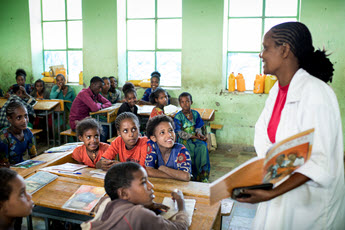
"I was trained in iCCM/CBNC [Integrated Community Case Management of Common Childhood Illness/Community Based Newborn Care] in 2012. In earlier days, child health care service was not provided at the health post level. Mothers had to travel far to get to a facility and it cost a lot of money for transportation and health service. Instead, they would visit traditional healers. All this has now been resolved with the provision of child health care services at Hagere Selam Health Post."
For over a decade, the Last Ten Kilometers (L10K) project, funded by the Bill & Melinda Gates Foundation, supported HEWs like Asefu to build their skills to provide quality reproductive, maternal, newborn, and child health care services. With additional support from the United States Agency for International Development (USAID) and UNICEF, L10K trained HEWs to correctly assess, classify, and manage common childhood illnesses and to identify and manage newborns with sepsis. By bringing treatment closer to the communities, more children now have access to lifesaving treatments.
In addition to providing health care services at health posts and during household visits, HEWS visit schools to provide lessons on good nutrition practices and information on health services for students to bring home to their families.
"At first, the community was not aware that child health care services were available at the health post. So we started to raise awareness through churches and schools and we invited families over to the health post to come and see for themselves."
"In time we saw a decrease in the number of diarrhea and pneumonia cases, which were quite common in children. If a child had skin problems, the parents did not know that it could be medically treated so they would always go to religious healers. Using iCCM/CBNC approaches, we are able to treat most childhood illnesses and parents are happy to see their children healed."
"We are also happy to see our community satisfied because as mothers ourselves, we know the pain of having a sick child and being unable to help the child."
"We provide services at the health post and in homes during our house-to-house visits. Since we travel with our kit [of tools, handbooks, and materials], when we find sick children, we can easily diagnose and treat them. Mothers trust us greatly and tell us that next to the Creator they trust that we shall heal their children. This is a huge responsibility."
"Over the years, we have been able to identify sick children and treat them and as a result, infant and child mortality [especially under five] has significantly decreased."
The L10K 2020 project, the second phase of the project, continues to support Ethiopia's health system by building the capacity of the staff and systems of the Regional Health Bureaus and Zonal Health Departments to ensure health care providers like Asefu have the support, skills, and tools they need to provide quality and equitable RMNCH services.
Problem-solving with Communities Improves Health Care Behavior and Practices
Involving communities in planning and monitoring the health care services they use helps improve health outcomes. The Last 10 Kilometers (L10K) 2020 project, funded by the Bill & Melinda Gates Foundation, has been supporting communities in Ethiopia to take ownership of their health care for over a decade with innovative strategies including community-based data for decision making and participatory community quality improvement. Through strategies like these, community members are able to draw attention to challenges that affect their access to quality services and help implement solutions so that more people receive the care they need.
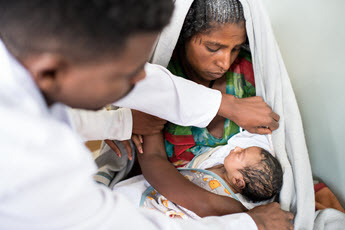
Recently, L10K 2020 published the article "Effectiveness of Participatory Community Solutions Strategy on Improving Household and Provider Health Care Behaviors and Practices: A Mixed-Method Evaluation," which presented the findings of the project's evaluation of its participatory quality improvement strategy to improve the use and quality of maternal and newborn health (MNH) services in eight primary health care units.
L10K 2020 implemented the Participatory Community (PC) Solutions Strategy, a four-step quality improvement process (plan-do-study-act), between March 2016 and October 2017. The strategy involved community members, health extension workers (HEWs), health center staff, woreda health office staff, and referral hospital staff in conversations to identify challenges and propose solutions to increase the uptake of ante- and postnatal care and skilled delivery services. Through these conversations, participants identified problems related to health workers' capacity to deliver or link to services, as well as cultural norms around disclosing pregnancy in the first trimester. Using this information, L10K 2020 worked with the health facilities and community members to design interventions to strengthen health workers' skills and increase community awareness about MNH services.
"As positive consequences…we established strong relationships among community, WDAs, HEWs, and health centers staff." – Interviewee from SNNP
To evaluate the impact of the strategy, L10K 2020 conducted household surveys with women who had children younger than one year of age to compare changes in maternal and newborn health care indicators in the 39 communities that received the intervention and the 148 communities that did not. The project also interviewed community volunteers, health extension workers, health center directors and staff, and project specialists. Analyses of the surveys showed improved uptake of both skilled delivery and postnatal care that is attributable to the intervention.
Those interviewed reflected positively on the process and observed improvements in women's understanding of the importance of early antenatal care, stronger linkages within the health system and between the community and the health system, and better methods to evaluate the quality of MNH services. Participants also reported that the PC Solutions strategy created a sense of ownership and shared responsibility for implementing MNH interventions.
"From [this strategy], I learned how to review my work with evidence and how to generate change ideas, if the work does not bring change." – Interviewee from Amhara
Engaging communities to design and implement interventions yields local solutions to local problems. Working with communities also increases the demand for quality health care services, making it more likely that these services are accessible and available in the long term.
How a community worked to improve the quality of health services
Mendera is a community found in Limmu Woreda of Jimma Zone in Oromia region of Ethiopia. Most women in this kebele used to deliver their babies at home unless there was a complication which would force them to seek medical assistance from a health facility. Provision of health care services by the primary health care unit - Limmu Genet Health Center and Mendera Health Post - was limited. The health center was under equipped and had only a small number of skilled health workers. The health extension workers (HEWs) of the health post used to work for only short hours in a day and a few days in a week.
Taking the situation into consideration, L10K introduced its community intervention – Participatory Community Quality Improvement (PCQI) to Mendera community to improve the quality of health care services. It first set up a discussion forum called ‘explore quality meeting’ and the community identified main bottlenecks and barriers to the access and quality of health care services. This was followed by identifying solutions and developing an action plan through another forum called ‘bridging the gap workshop’ and setting up a quality improvement team (QIT) to follow implementation of activities.
One of the major problems identified by Mendera community was the limited provision of health care services by the health post. So, soon enough renovation was carried out and a residence for the HEWs was built close by allowing the health post to provide services 24 hours a day and seven days a week. The HEWs started to work more closely with health development army members. They gathered information on the health status of each household and regularly followed up pregnant women. Before long, the number of home deliveries significantly reduced. According to Abebe Desie, Deputy Head of Limmu Genet Health Center, in 2013/2014 over a 12 months period the number of women who delivered at the facility increased to 418 as compared to the previous year where only 4 women delivered over the same period of time. Fatte Sherif who is one of the HEWs said that, a law enacted by the community also helped reduce home deliveries. The community declared that a woman who has delivered in her home will not receive the traditional blessing by the community elders.
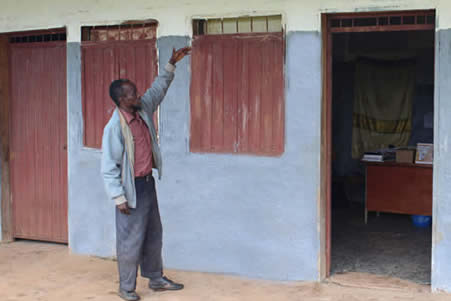
Ato Awel QIT member showing the renovated Mendera HP
Today Mendera kebele has a well-designed health plan and budget which is owned by the Kebele Council. Community members make their own contribution in complementing the budget to ensure that their maternal and neonatal health care needs are met. For instance, a total of ETB 7385.00 (USD 369.25) was raised by the community to build a maternity waiting room for the health center and ETB 6000.00 (USD 300.00) to purchase 6 stretchers to transport pregnant women from their homes to health facilities (where ambulances are not available). In addition, ETB 17,000.00 (USD 850.00) was raised for the renovation of the Mendera health post and the construction of the residence for the HEWs.
Mendera has earned recognition and other kebeles are taking lessons on how to take responsibility for their own health and how to improve quality of health services. Health workers like Fatte say that they now do more meaningful work and they receive better support than ever from all the different levels.
Saving Fentiya’s son
Fentiya Asmare went to Jabi Genet Health post with her three week old son to have him examined by Mulualem Wubliker, the health extension worker. Mulualem examined him and observed that he does not move unless he is touched, he has severe chest in-drawing and fast breathing. Moreover, he has high fever; Mulualem was worried by his condition and gave him pre-referral amoxicillin and gentamycin before referring him to the health center located 5-6 kms. away. She tells Fentiya to take her son immediately which Fentiya does accompanied by her husband and other family members. At the health center they observe the severity of the infant’s condition and further refer him to the hospital in the closest town – Debre Markos. But Fentiya has now given up hope. Though her family members insist that they go to the health facility in town, Fentiya has decided to take her infant home and let him die in piece there, believing that he won’t make the trip.
As a vCHW in a CBDDM target woreda, Dejyetnu uses a
Pregnancy, Delivery, and Child follow-up checklist.
(Photo: B. Gelaw)
The following day Mulualem, drops in to ask after Fentiya ’s son and the mother tells her what happened. Mulualem decided to try all she can before giving up and so starts him on treatment by giving him amoxicillin and gentamycin for seven days. The infant gradually shows improvement and finally gets well after one week. Today he is two months old when his mother tells us this story of a life saving initative taken by a brave young woman - Mulualem.
Jabi Genet health post is found in Debre Elias Woreda, East Gojjam Zone of Amhara region, and is the Zone where L10K’s Community Based Newborn Care initiative was first implemented in October 2013.
A change of heart
Nefisa finalized her preparation of what she needed when the time came to go to Shebe Health Center to deliver her child. The wife of her brother‐in‐law has agreed to come over to her home and take care of her five year old daughter and the household chores. When her labor finally arrived in the middle of the night she called Kassech Bekele the health extension worker of Yanga kebele. Kassech called the driver of the ambulance of the health center and next the midwife nurse to expect Nefisa and prepare in advance for her delivery.
Nefisa Hassen is a 24 year old farmer who lives in Yanga kebele of Shebe Sombo Woreda, Jimma Zone, Oromia region. She had her first child five years ago at home. Her labor was prolonged and it was a difficult birth. Nefisa had prayed that when her time came to deliver there would be no complication that would force her to go the health center. She would not be able to handle the pity of her neighbors for not been able to have a normal birth. Furthermore, she didn’t know if her husband would be able to cover the financial cost for transportation and for the services of the facility.
But this time she knew better. Kassech had worked long and hard with her, as she had with most women in her community, in teaching her the benefits of having her child at the health center. So when she was pregnant with a second child and she was into her sixth and eighth month she and her family made plans in preparation for the birth and any complication that may arise and money they may need (though maternal care services are provided free of charge by health centers).
Nefisa Hassen and her husband
Two weeks after Nefisa delivered at the health center she happily relates how everything went smoothly and swiftly. She was especially impressed with the efficiency of Abdulahi Abaselam, the midwife, and how assuring he was when explaining that for any possible problem that may arise they would be able to handle it. Abdulahi is one of the BEmONC trainees ‐ a training provided by L10K. He was trained in matters that ranged from infection prevention practice and hand washing to severe pre‐eclampsia and breech delivery. He explains that BEmONC intervention has helped him in building his knowledge and clinical skills to respond appropriately to the needs of women during pregnancy, childbirth, postpartum period and the needs of newborns. Moreover, the intervention has also assisted in renovating the ward which was poorly and it provided essential equipment. As a result, not only has the number of mothers delivering at the health center increased but also the number of mothers referred to Jimma hospital significantly dropped.
Dabash Mohammed who is the head of Shebe health center says that since September last year the number of mothers delivering at the health center has double reaching over 50 women/month from 20‐25. The training provided by and supplies and equipment received from L10K has complimented the government’s effort and improved provision of BEmONC services. Topping this, friendly health care provided by the health workers has increased the number of mothers seeking health care from Shebe health center.
Community based nutrition for improved child health
Meseret is a young mother of two children. She visits Ejersa Kubeti health post every month to have her nine months old daughter weighed. Every month, the Health Extension Workers (HEWs) dedicate a couple of days to weighing children under two years of age. Ejegayehu with her colleague Seble have set up eight outreach sites where they carry out growth monitoring and promotion (GMP) activities in the kebele found in Siadbeber and Wayuworeda of North Shoa Zone, Amhara region.
Ejegayehu weighs Meseret’s daughter on a salter scale and carefully takes note of the number. Meseret’s nine months old daughter weighs 8.8 kg.; Ejegayehu, takes the family health card from Meseret who has come with it, and opens the page to the child growth chart to plot the number. She commends Meseret for feeding her baby well and keeping her healthy. She takes a couple of minutes to advise her to keep this up and finally reminds Meseret to come back next month for the same process.
Meseret leaves the health post happy and satisfied. She says that she has seen the benefits of proper nutrition through her first born who is four years old. In the same way, she explains how she wants to ensure that her daughter is fed well. She prepares a soft porridge (genfo) just as Ejehayehu has taught her by mixing grain with fruits and vegetables. “I feed this to my daughter three to four times a day in addition to my breast milk. Then I make sure that she is gaining weight properly by coming every month to the health post and having her weighed. She has never been sick since she was born,”says Meseret.
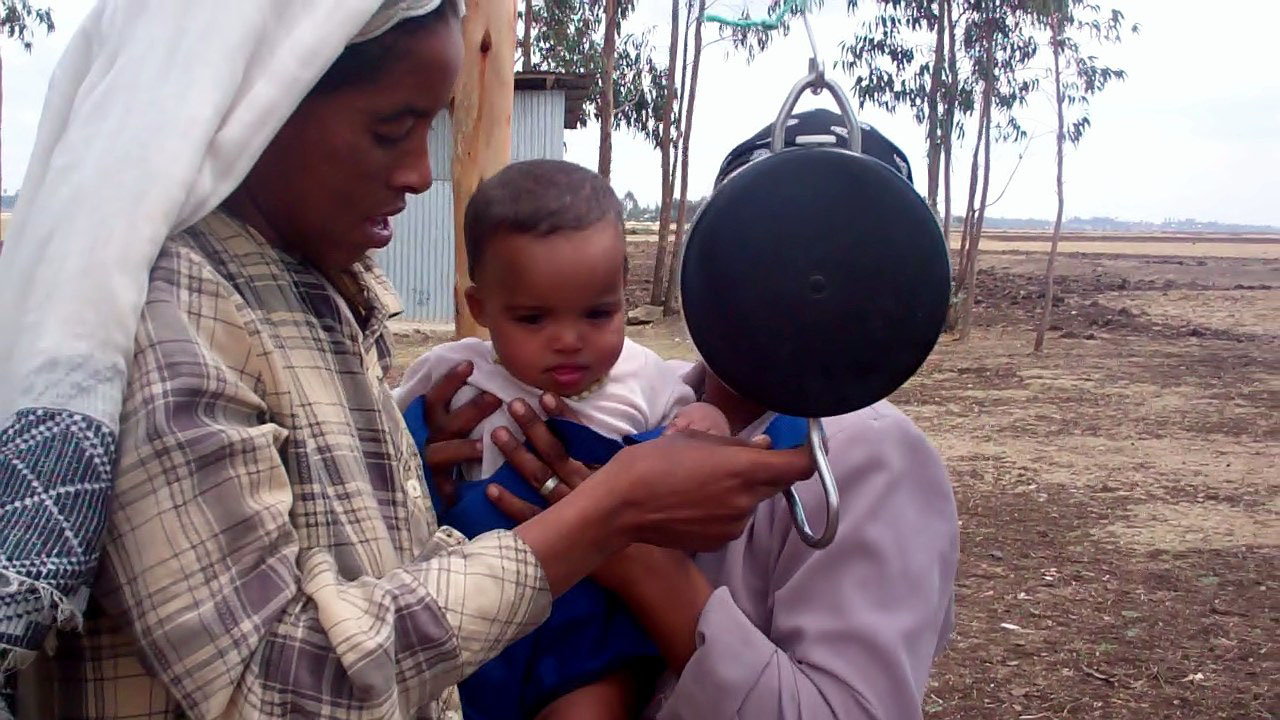
Ejegayehu weighs Meseret’s daughter on a salter scale
The HEWs have a growth monitoring wall chart by which to follow up the progress of each child. They closely monitor children every month by referring to their registers and to a growth monitoring chart found in the family health card owned by each mother. Ejegayehu makes sure to counsel mothers on how to improve and maintain a good feeding practice for their children.
The GMP participation rate in the kebele increased from 29% in March 2013 to 98% in March 2014. The Global underweight prevalence reduced from 15% (with 7% being severely underweight) to 1% (and none found severely underweight) during the same period. There were eight children whose Mid Upper Arm Circumference (MUAC) was less than 11cm when an assessment was carried out during the Community Health Days (CHD)conducted in August 2014 but this number reduced to zero at the CHD conducted in December.
Ejegayehu and Seble strongly believe that continuous efforts in raising awareness on child feeding practices, supported by food demonstration and community conversation sessions with mothers and improved GMP participation, can make significant changesin improving child health.
Life-saving treatment close at hand
It was a hot day with an occasional breeze and a perfectly clear blue sky but the health extension workers Hiwot Berhe and Freweyni Tesfaye work tirelessly not minding the heat. There are several mothers who have come to Dedebit health post in search of treatment for their sick children. Located in North West zone of Tigray region in Ethiopia the health post has been providing child health care services for almost three and a half years now to a population of 5710. Since Hiwot and Freweyni took training in integrated Community Case Management (iCCM) four years ago the case load of the health post reached 2382 by the end of 2014 which is a heavy load for a health post.
Dedebit is located 17 kms away from Mai Hanse town which used to be the closest town to get health service. Nonetheless, availability of transportation to the town was a challenge for many families in earlier days when they had to take their sick children for treatment. The road was a dirt road and difficult to travel on. As a result, many parents resorted to traditional treatment found much closer and though some children may recover, most would end up being sicker or even die.
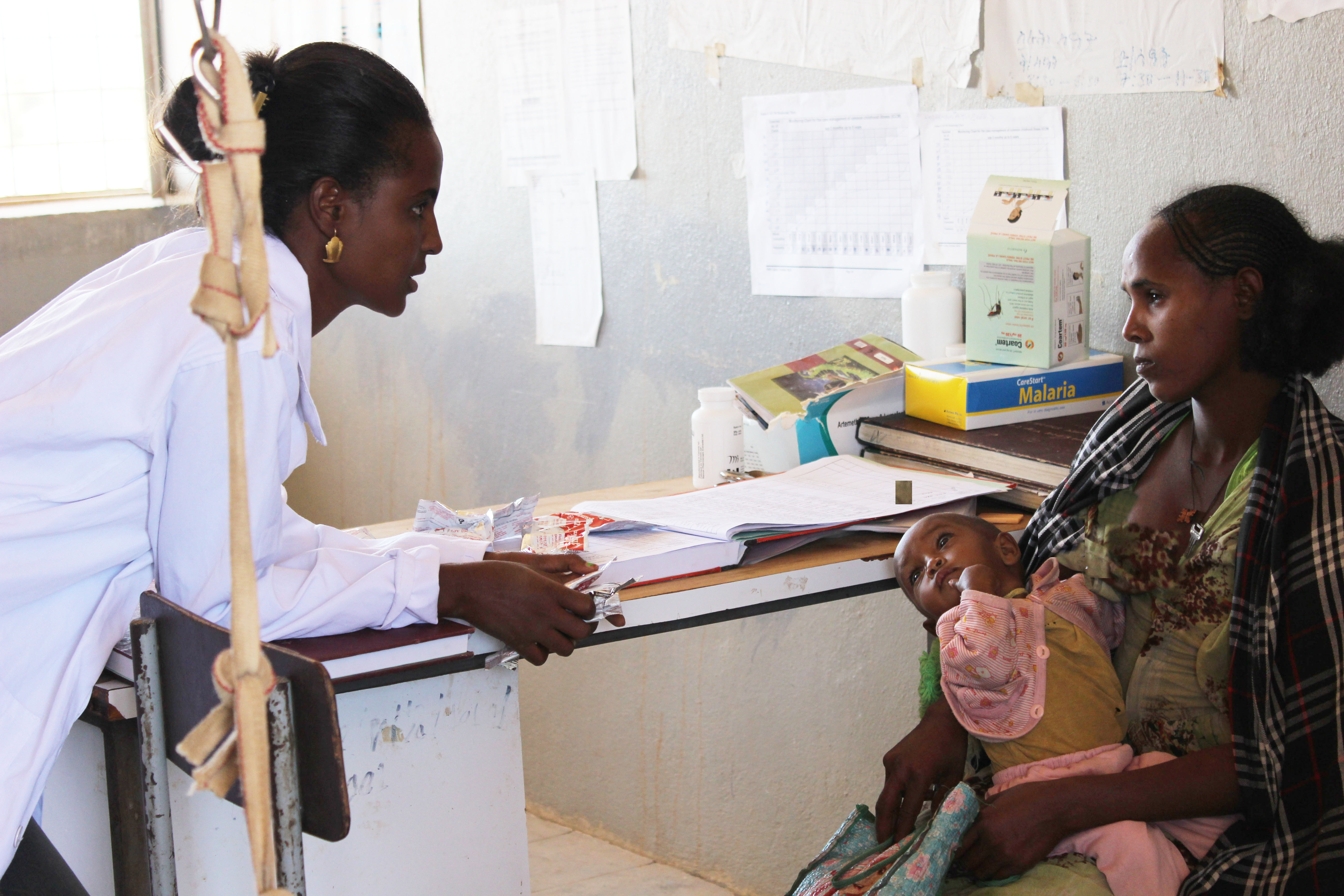
Hiwot Berhe the Health Extension Worker of Dedebit health post,talks to
Ergibaye Gerenchael about her son’s condition.
After their iCCM training, Hiwot and Freweyni providedchild health services at their health postand took turns in making regular home visits to treat sick children. The most common childhood sickness they say is malaria, pneumonia, and diarrhea.
Ergibaye Gerenchael is a 19 year old mother with a three months old son. In November 2014 she visited Dedebit health post because her son was sick with diarrhea. Freweyni assessed his situation and advised Ergibaye to give her son oral rehydration salts (ORS) by showing her how and then she provided her with ORS packets and a zinc supplement to take home. Ergibaye is grateful that child health care service is provided at their doorsteps. “If this was not so, we would have had to travel 17 kms into Mai Hanse town to reach the closet health center”, she says and continues with a broad smile, “Now we save money and time by visiting the health post instead. We are also more comfortable having our children treated here because we are familiar with Hiwot and Freweni since they visit us in our homes regularly”.
Beyond their ability to assess, classify, and manage childhood illnesses these health extension workers today have better acceptance by their community because they provide both preventive and curative services.
Taking out from one pocket and saving it in the other
Delbar Mohammed 43 and Lubaba Sherifa 35 are parents to five children (three girls and two boys). They live in Germama Gale kebele, Dalocha Woreda, Silte Zone of Southern Nations, Nationalities and Peoples’ region of Ethiopia. The last child born to them on October 2014 is Hayat Delbar. Her mother, Lubaba is a health development team leader – a community volunteer - who monitors the health status of five households in her neighborhood.
Lubaba is a member of the Germama edir, a traditional community organization set up to assist in times of mourning. She and her husband contribute ETB 10.00 (USD 0.50)/month for the new initiative of the edir which is provision of support for maternal and child health matters. A month after Hayat was born she fell ill. Lubaba took Hayat to Germame Gale health post where Yitagesu, the health extension worker examined her. Identifying her problem as sever pneumonia Yitagesu referred the infant to Dalocha health center. Immediately, Lubaba went over to her edir and requested a loan to cover her transportation and other costs. She was granted ETB 250.00 (USD 12.50). At Dalocha health center the family was again referred to Butajira Hospital in the city. They went there and Hayat was admitted and received treatment for three days before she was released.
Delbar cannot emphasis enough the benefits of saving for maternal
and child health matters .
Upon return from the hospital Yitagesu was provided feedback by Dalocha health center on the condition of the baby so she went to visit. She made continuous home visits to follow Hayat’s condition until the baby was fully recovered. Two months later Hayat made a full recovery and she was quite healthy.
Delbar, the father is very grateful to the edir after seeing its benefits. He says, “I now understand how easily we have saved the life of our child by taking out money from our other pocket. The edir is like our other pocket. Had it not be for our edir saving I would have had to sell my cattle as a last resort which would have meant severely puncturing our limited income”.
Delbar also said that he was especially happy with the referral system that facilitated speedy provision of health service. He appreciated the treatment they received particularly at the health center. The health workers guided them on what to do and where to go which in previous times was usually the most difficulty information to get.

